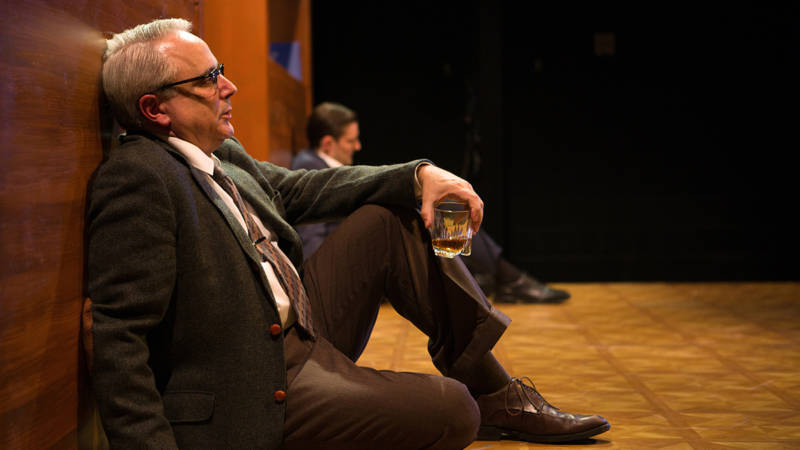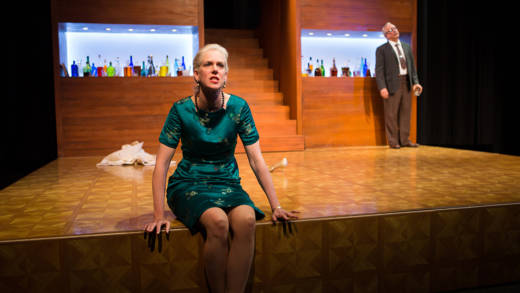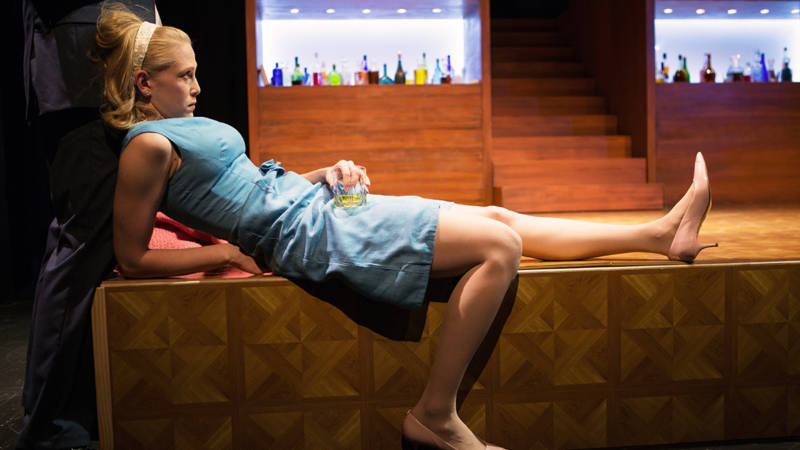Edward Albee is dead. While audiences and theater-makers around the world mourn the three-time, Pulitzer-Prize winning playwright’s recent passing on Sep. 16, his work palpably shows that the question of death is not always a settled one.
That’s certainly true of his 1962 shocker, Who’s Afraid of Virginia Woolf?, a play so simply conceived that you could sum it up in two actions: guests come and guests go. Or if you’re a stickler for detail: a middle-aged couple, George and Martha, invites a younger one, Nick and Honey, over for late night drinks, on a kind of wouldn’t-it-be-fun-to-keep-the-party-going lark.
Most productions of Who’s Afraid follow the template of Mike Nichols’ justly lauded 1966 film adaption starring Elizabeth Taylor and Richard Burton, right down to Taylor’s boozy line readings and the knick-knack realism of the sets. So the first shock we get in the Shotgun Players’ radical take on Albee’s play is what’s missing. Almost everything. Director Mark Jackson and set designer Nina Ball strip the stage of every prop except the most essential: liquor and the glasses with which to down it.

That one move plunges us into a world of stark beauty. The raised stage resembles a ballroom platform, its shiny floor spit-polished for the violence to come. Bisecting the long floating bar that covers the width of the stage, a bare staircase leads to a shadowy second floor bathroom, the finish line to a couple of memorable sprints to vomit in private. The liquor bottles, a dazzling array of primary colors offset by a white background, are garishly lit and possess an almost religious luminescence.
One might say that it’s a set that requires our active imagination. Every aspect of it could stand for almost anything at any given moment. Beth Wilmurt’s Martha slides down the front of the platform with an ice skater’s ease, ending with a demure cross of the legs as if she had politely lowered herself into a chair. When David Sinaiko’s George needs privacy, he merely steps off the platform and into what feels like nothing. Yet that space ably transforms into various hallways, the living room, and a graveyard of abandoned and broken shot glasses.




